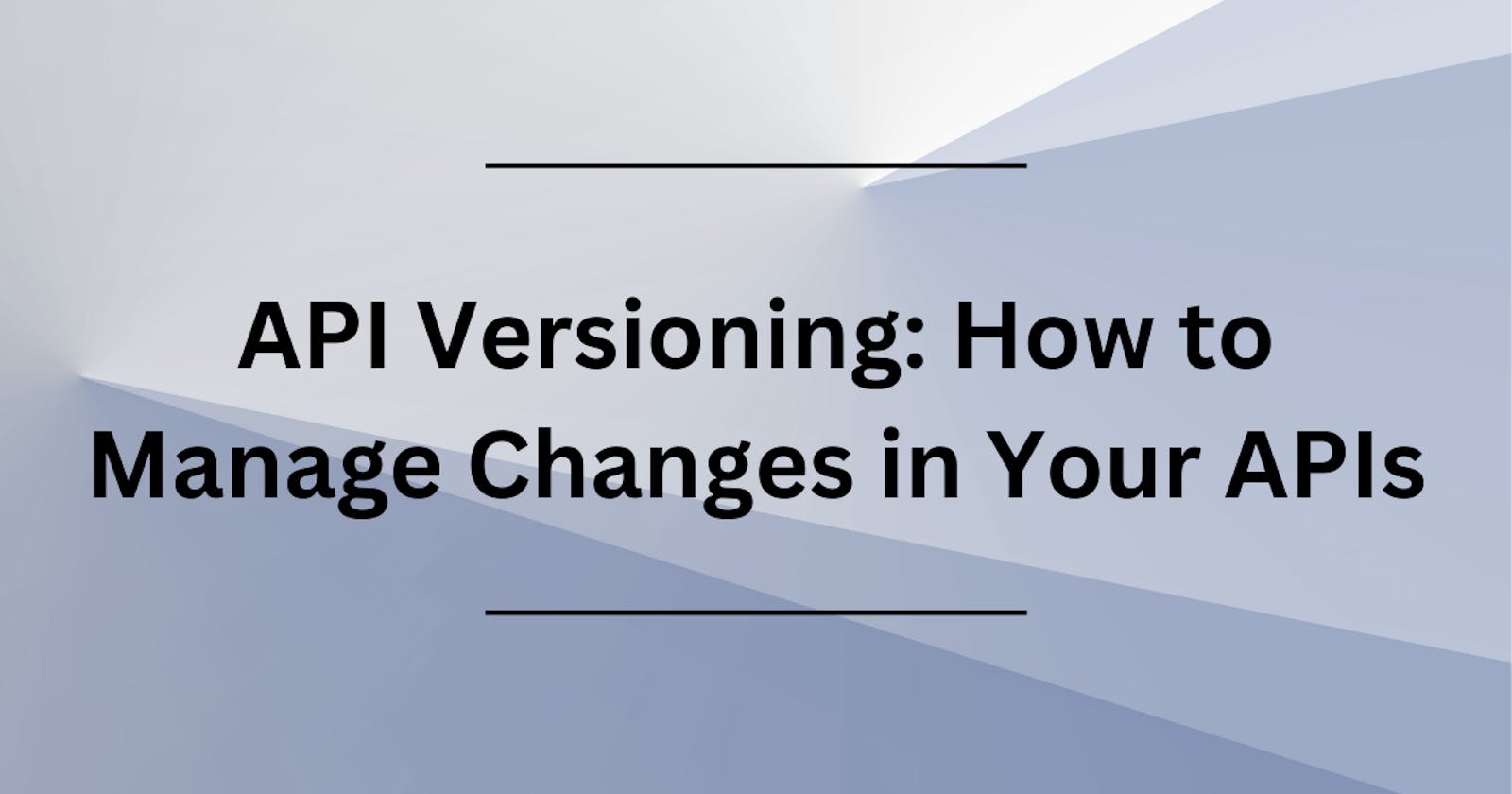API Versioning is a critical aspect of API development that must be properly implemented when building maintainable and reliable APIs.
As you begin to add new features and changes to your API, older versions of your API may not work as intended.
Without proper versioning, developers who rely on a particular version of your API may experience errors or broken functionality.
In this article, we will dive into API versioning, the various API versioning techniques, and the best practices to use when versioning your APIs.
What is API Versioning
API versioning is the process of maintaining different versions of an API.
As you begin to add new features and other changes to your API over time, this may cause the applications that depend on your API to experience errors or broken functionalities.
Here, API Versioning serves as a solution to mitigate the risks of errors on applications that depend on your API as developers can gradually move to the newer version without breaking the application.
API Versioning techniques
API versioning has countless techniques but here are three of the most common techniques you should know:
- Url-based Versioning: URL-based versioning involves adding the version number to the URL of your API.
For example, api.example.com/v1/login
In the URL above, the “v1” stands for “version 1” which is the current version of the example API.
This method is quite easy to implement.
However, it can lead to long URLs due to an increase in the version number which often leads to confusion.
For example https//:api.example.com/v21672/login
2. Query-Parameter Versioning: Query-Parameter Versioning involves adding the version number as a query in the API request.
For example, api.example.com/login?version=2
This method is also easy to implement but could lead to a query injection attack and potential caching issues.
3. Header-based Versioning: Header-based Versioning involves including the version number as a custom header in the API request.
This method is quite flexible and more secure but requires more work to implement.
Best practices for implementing API Versioning
Use Semantic Versioning: Semantic Versioning is a convention that provides an efficient way of versioning APIs. According to Semantic Versioning, version numbers are of three parts: MAJOR version, MINOR version, and PATCH version.
For example, api.example.com/v3.4.5/login
Here ‘3’ is the major version, ‘4’ is the minor version, and ‘5’ is the patch version
By following this convention, you can communicate clearly to developers what changes have been made to the API and how they affect their applications.
Use HTTP Headers: Using HTTP headers is a common and vital practice for versioning APIs.
The most common header is the “Accept-Version” header. It allows clients to specify the API version they want to use
Provide API Documentation: Concise documentation is vital for any API, especially for APIs with more than one version. Documenting the changes made between versions and providing examples of how to use new features can help developers migrate to new versions with minimal effort and reduce the risk of errors on applications that depend on your API.
Perform Thorough Tests: When introducing new API versions, it’s important to perform thorough tests to ensure that existing functionalities continue to work as expected. This includes testing for compatibility with existing clients and any potential performance issues.
Monitor Usage of your API: Finally, ensure to monitor the usage of your API to identify issues or opportunities for improvement. This includes tracking usage metrics such as API calls, response times, and error rates, and using this information to improve the API and identify potential areas
Conclusion
In this article, you have learned what API Versioning is, the importance of versioning your APIs, also learn ways to Version your APIs using the most common strategies and the best practices for proper Versioning.
I hope you had fun doing this with me. Please follow me on Twitter to see more content like this. Thank you.
